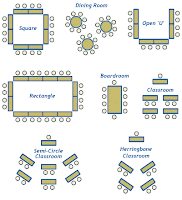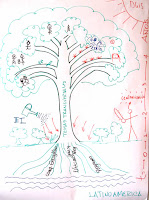 The Bibliotheca Alexandrina was, last week, host to a couple of talent shows. One was that of participants in the Youth Employment Summit (YES). Amongst others, Dumisani Nyoni was on stage with his guitar performing a medley of songs from across the world – with his audience standing and singing along as he strums something from a part of the world with which they feel special association. Another, quite different talent show took place during the ‘New Learning for Sustainability in the Arab Region’ event.
The Bibliotheca Alexandrina was, last week, host to a couple of talent shows. One was that of participants in the Youth Employment Summit (YES). Amongst others, Dumisani Nyoni was on stage with his guitar performing a medley of songs from across the world – with his audience standing and singing along as he strums something from a part of the world with which they feel special association. Another, quite different talent show took place during the ‘New Learning for Sustainability in the Arab Region’ event.
Fayez Mikhail, an Information Technology Manager from a large, international environmental organization, took centre stage (well actually just off-centre so as not to obscure the images projected on the screen behind) and showed a talent he had never shown before in almost twenty years with his organization. Fayez has a natural talent for speaking in public. Discovery of this talent was quite by accident. He never signed up for a talent show. We needed a speaker on how developments in information and communication technologies have affected learning within our organization and how we are sharing and learning with others. The speaker would be before a largely Arabic audience. Who better than our Egyptian IT Manager! It didn’t take long for us to close the deal and before we knew it Fayez was on stage and displaying a talent he never even knew he had. (Conversely, during the event we were also presented with performances by that highly experienced public speaker who clearly lacks any natural talent at all and who would have been wise to ask another to do the job for him/her – after all if your lyrics and score are great but you can’t carry a tune you’re unlikely to convince your audience that you belong at the top of the charts).
How can we tap into natural talent in our organizations? Would bringing talent shows into the workplace help us discover talents we never knew we had? And would they help us identify others with the talents we lack who could help us for greater impact? If not a talent show, how can we provide other environments in which we can discover these things? Surely our talents shouldn’t go hidden for almost twenty years. And once discovered, how can we make sure we use these to their full potential?























 Draft one (late February):
Draft one (late February):



